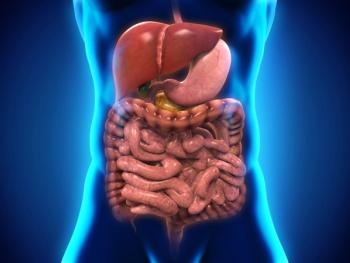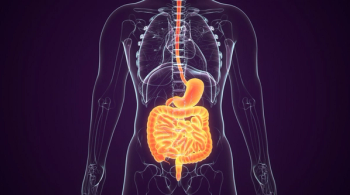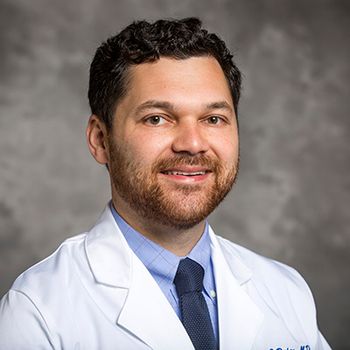
Study Aims to Address CAR T Accessibility Among Disadvantaged Groups

A retrospective study sought to assess CRS and ICANS onset and duration, as well as non-relapse mortality causes in patients infused with CAR T-cell therapies.
CAR T-cell therapy requires a greater investment in a patient’s time and may carry financial and physical burdens from the onset of treatment to weeks upon its completion, according to Nausheen Ahmed, MD.
CancerNetwork® spoke with Nausheen Ahmed, MD, an associate professor in the Division of Hematologic Malignancies and Cellular Therapeutics at the University of Kansas Medical Center. She revealed her rationale for conducting a retrospective study published in Blood Advances1 seeking to assess CRS and ICANS onset and duration, as well as non-relapse mortality causes in patients infused with CAR T therapies. Ahmed is the lead study author of the Blood Advances study.
Ahmed highlighted accessibility issues affiliated with CAR T-cell therapy. These issues were particularly pronounced for patients from lower socioeconomic and minority groups, particularly African Americans, and those who live hours away from a specialized care facility. Furthermore, Ahmed questioned the viability of Risk Evaluation and Mitigation strategy (REMS) mandates, specifically one’s that required patients to relocate within 2 hours of a specialized care facility for 4 or more weeks.
Investigators reviewed data from 475 patients across 9 centers who received CAR T-cell therapy for relapsed or refractory large B-cell lymphoma from 2018 to 2023. Patients received either axicabtagene ciloleucel (axi-cel; Yescarta; n = 216), tisagenlecleucel (tisa-cel; Kymriah; n = 158), and lisocabtagene maraleucel (liso-cel; Breyanzi; n = 101).
Non-relapse mortality (NRM) was defined as death due to causes unrelated to disease progression and was commonly associated with infectious complications. New-onset CRS and ICANS were portrayed as percentages of patient populations at risk.
Data from the study show new-onset CRS and ICANS, respectively, occurred in 0% and 0.7% of patients with B-cell non-Hodgkin lymphoma (NHL) at 2 weeks following CAR T-cell infusion. Additionally, no new cases of CRS occurred after 2 weeks, with 1 additional incidence of ICANS occurring week 3. Additionally, all-cause and non-relapse mortalities, respectively, occurred in 42.8% and 9.5% of all patients, including 46% and 12% of axi-cel recipients, 48% and 7% of tisa-cel recipients, and 27% and 9% of liso-cel recipients, respectively (P = .0011; P = .3150).
Transcript:
The rationale for this study started from my background in understanding more about accessibility issues with CAR T. Currently, CAR T-cell therapy is not your regular off-the-shelf-drug that, if prescribed, patients just get the next day. It's one of those therapies that have a lot of upfront investment with the patient's time. It does carry some financial and physical burden on the patient from the time of collection of the cells all the way up to the post-monitoring period. Some of my prior work demonstrated that there are groups of patients who are not able to get CAR T or have a lower likelihood of getting CAR T, such as those from lower socioeconomic classes and those who may be from ethnic and racial minority groups, especially African American groups. I've demonstrated that in 2022 in one of my papers,2 as well as in 2024, which we recently published in Transplantation in Cellular Therapy.3 We also found that there are some other groups of people such as those living more than 2 hours from the treatment center who may not have adequate access to CAR T.
Putting it all together, the thought was, "Is there any part of this whole CAR T process that can contribute to the physical and financial burden without being of much value?" Is there anything that we can do to make it easier for the patients without compromising safety or efficacy? One thought that came to my mind was that there's an FDA REMS mandate [stating that] patients have to relocate to be within 2 hours of the center for up to 4 weeks, and they should avoid driving for up to 8 weeks from the day that they get their CAR T-cell therapy. Are those restrictions necessary?
References
- Ahmed N, Wesson W, Lutfi F, et al. Optimizing the post-CAR T monitoring period in recipients of axicabtagene ciloleucel, tisagenlecleucel, and lisocabtagene maraleucel. Blood Advances. Published online July 24, 2024. doi:10.1182/bloodadvances.2023012549
- Ahmed N, Shahzad M, Shippey E, et al. Socioeconomic and racial disparity in chimeric antigen receptor T-cell therapy access. Transplant Cell Ther. 2022;28(7):358-364. doi:10.1016/j.jtct.2022.04.008.
- Ahmed N, Sun F, Teigland C, et al. Chimeric antigen receptor T-cell access in patients with relapsed/refractory large B-cell lymphoma: association of access with social determinants of health and travel time to treatment centers. Transplant Cell Ther. 2024;30(7):714-725. doi:10.1016/j.jtct.2024.04.017
Newsletter
Stay up to date on recent advances in the multidisciplinary approach to cancer.
















































































